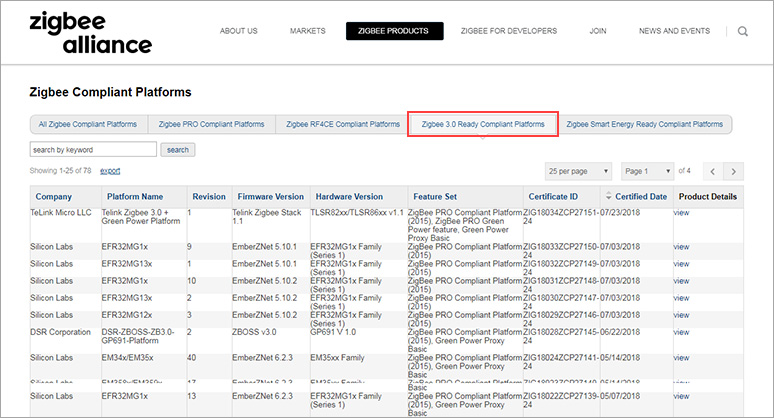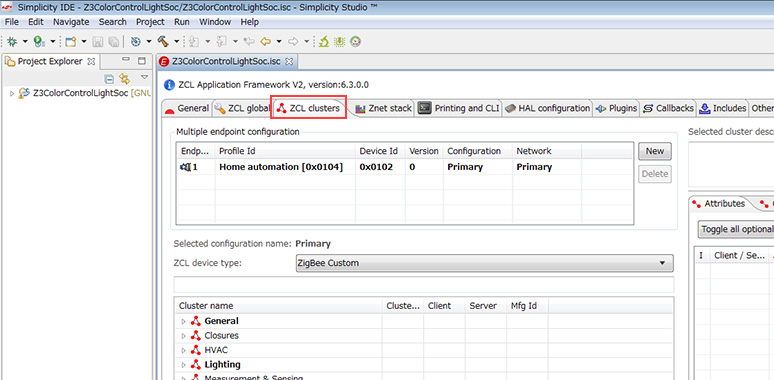Bluetooth®, Wi-Fi, Zigbee, Thread, Z-Wave, Sub-GHz... Silicon Labs has a wide range of very attractive wireless solutions. We would like to introduce you to our attractive product line.
Silicon Labs/Wireless Course series overview
Part 2 is "Zigbee development flow".
In this article, we will introduce the Zigbee equipment development process, including the Zigbee certification acquisition process.
[Silicon Labs/Wireless Course] Zigbee Basics
do you know? "Until Zigbee equipment is made"
Unfortunately, there doesn't seem to be much information about the development flow of Zigbee equipment.
A brief summary of the steps is as follows:
- Select Zigbee Compliant Platform Certified Devices
- design equipment
- Once the design around Zigbee is complete, do pre-testing
- Tested by an accredited test lab and certified by the Zigbee Alliance

I think that it is difficult to understand just this, so I would like to see the procedure in a little more detail.
1. Select a Zigbee Compliant Platform Certified Device
When installing Zigbee functionality in a device, the first thing that must be done is which wireless device/module should be used to implement Zigbee? is to decide
Let's use company X's product A because we've used it in the past, use company Y's product B because it's a company we've never heard of but it's cheap, and use company Z's product C to build our own Zigbee stack … some might say.
but please wait a moment!
Zigbee is a standard that requires Zigbee certification for final products. In order to acquire Zigbee certification (Zigbee Certified Product) for the final product, it is a prerequisite to develop equipment using devices that have acquired Zigbee Compliant Platform certification.
In other words, if the selected device does not have Zigbee Compliant Platform certification in the first place, there is a possibility that Zigbee certification cannot be obtained even if you work hard to develop the device.
Before deciding on a device, always check in advance whether the device is Zigbee Compliant Platform certified.
What is Zigbee Compliant Platform?
This Zigbee Compliant Platform certification is obtained by the device manufacturer, not by the user.
The combination of hardware (device) and software (Zigbee stack) has been verified to comply with the Zigbee specification.
You can check which products have Zigbee Compliant Platform certification on the ZigbeeAlliance website.
Looking at Zigbee 3.0 compliant platforms, Silicon Labs' registrations line up. It confirms Silicon Labs' active development of Zigbee compatible devices, and also gives us a sense of the high expectations of the market for Silicon Labs' products.

2. Design your equipment
We will design software targeting the selected Zigbee Compliant Platform.
Silicon Labs EFR32MG (SOC) and MGM1xx (module) are designed using a development environment called Simplicity Studio. This Simplicity Studio is a familiar development platform that is also used for the development of Silicon Lab's 32-bit microcontrollers (EFM32 family) and Bluetooth modules (BGM1xx family).
Simplicity Studio is equipped with a tool called Application Builder, on which you can configure cluster settings, corresponding profile settings, security settings, plugins and callbacks. Once the settings are complete, the source code will be generated according to the settings.

After generating the Zigbee stack, design the user code.
The operation is basically event-driven, so when a certain event occurs, the appropriate processing will be performed in the corresponding callback processing. APIs are provided for controlling the Zigbee stack and various peripherals, so we will use them to design the software.
3. Do a pre-test
Starting testing after the final product is completed is a big risk in terms of development time. It is very rational to do pre-testing in parallel with development or when the communication part is completed to some extent.
By purchasing the hardware and tools used for certification testing from the Zigbee Alliance, you can pre-test yourself. An application note (AN1118) is available from Silicon Labs for an overview of the test. Pretesting is not required, but recommended.
Communicate between the test harness, which is hardware for certification, and the final product designed by the user, and use the control tool for certification (ZigbeeTest Tool, abbreviated ZTT) to test according to the cluster used in the device. I'm going to go.
For ZTT and test harnesses, documents are available on the Zigbee Alliance website.
Requires Zigbee Alliance membership
You must be a member of the Zigbee Alliance to obtain ZTT/test harnesses, obtain test specifications, and obtain Zigbee certification.
There are tiers of members: Promoter, Participant, and Adopter, each with different privileges and annual fees.
4. Tested by an accredited testing lab and certified by the Zigbee Alliance
In order to obtain Zigbee certification, it is necessary to test the actual product with the final product.
The test itself is not performed by the Zigbee Alliance, but by an accredited testing institute (test lab), and the test report is submitted to the Zigbee Alliance for certification.
Only a limited number of accredited test laboratories can perform Zigbee certification tests. We can introduce you, so please contact us from the following.
Note that Zigbee certification is not Radio Law certification, so it is necessary to separately obtain Radio Law certification for the destination (export destination) of the product. (This is not specific to Zigbee)
It is also a good idea to use a module that has already acquired Radio Law certification in advance.
Also, if you want to acquire Works with Alexa certification, you will need to apply for certification to Amazon and test the actual device in addition to the above.
In the next issue, I would like to introduce the flow of evaluation and development using Silicon Labs devices.
[Silicon Labs/Wireless Course] Zigbee Environment Construction
Click here for recommended articles/materials
[Silicon Labs/Wireless Course] Zigbee Basics
[Silicon Labs/Wireless Course] Zigbee Environment Construction
Silicon Labs/Wireless Course series overview
Click here for recommended seminars/workshops
IoT Development and Introduction Hands-on Seminar (HEMS/Industrial)

